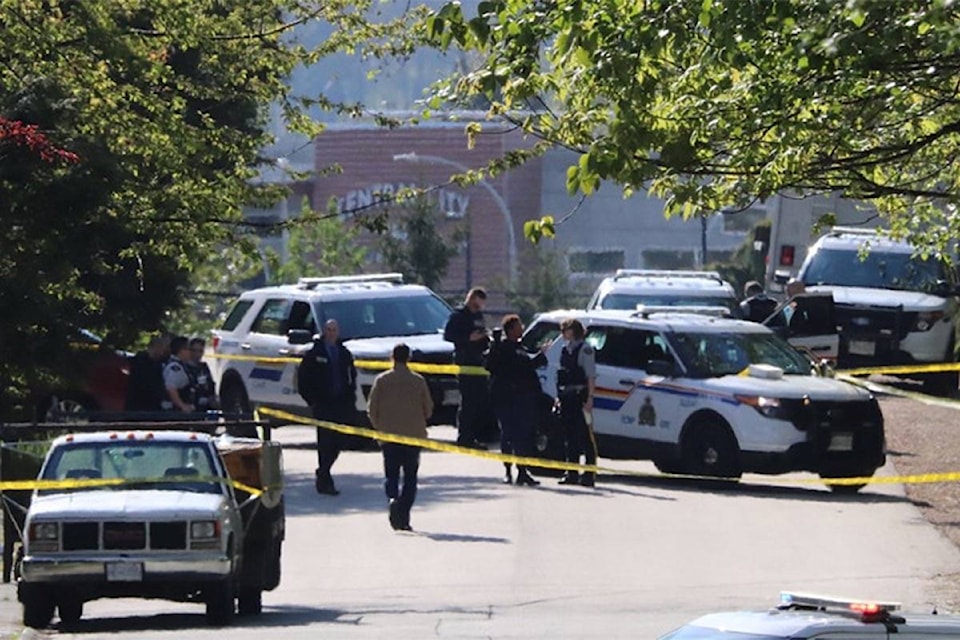Surrey RCMP is recording a 43 per cent increase in violent crimes in the first quarter of 2019 compared to the same period last year but police say it’s not as bad as it seems.
Police say this is the first stats report published since the Uniform Crime Reporting Survey by Statistics Canada was revised on Jan. 1. and as such, Corporal Elenore Sturko said, “residents will notice differences in some crime types that are not directly comparable to the same time period last year.”
“We don’t want anyone to become overly alarmed,” she told the Now-Leader. “It’s not because all of a sudden we’ve become a more dangerous place.”
The news stats have 2,003 recorded offences this January, February and March compared to 1,400 in the first three months of 2018.
“It’s like comparing apples to oranges,” Sturko said. “It’s very skewed.”
She said the “substantial increase” in violent crime recorded “can be at least partially attributed to the UCR changes.”
Meantime, property-related crimes fell by nine per cent, to 6,397 from 6,994.
All told, the number of Criminal Code offences rose by four per cent, to 11,098 from 10,693.
Assistant Commissioner Dwayne McDonald, in charge of the Surrey RCMP, said the nation-wide changes to how crimes are now scored “have resulted in a numerical increase in some of Surrey’s crime statistics, this is a more victim-centred approach to how police agencies across Canada manage investigations.”
Assistant Commissioner Dwayne McDonald. (Photo: Tom Zytaruk)
Sturko said it’s too early to “fully assess the impact of these changes on crime statistics” but the RCMP’s analysis “shows early indications that some crime types are impacted more than others including assaults, uttering threats, and shoplifting.”
Comparing the new system with the old indicates robberies and sex crimes increased by 48 per cent, and assaults by 40 per cent.
In the first quarter of 2019 Surrey had 10 bank robberies, police note, six of which involved two sprees that resulted in two arrests.
“They did a review that came up I think it was in 2016-17, remember they were talking about the under-reporting of sexual assaults and that many people felt they weren’t being believed, because what they were getting was people were classifying things scored as unsubstantiated – people felt police didn’t believe them,” Sturko said. “Police across the country, not the RCMP necessarily specifically.”
Surrey RCMP Corporal Elenore Sturko. (Photo: Tom Zytaruk)
“Now they will score things as if they did occur unless there is specific evidence that proves it did not occur, so it puts the balance of probabilities and credibility into people who are victims or complainants of crime,” Sturko explained. “People don’t have to feel that they’re not being believed any more because unless we prove it didn’t happen we are going with the belief that people are telling the truth when they complain to the police. Which is actually good because it’s meant to address people’s under-reporting of certain crime types, right.”
Sturko said that while the numbers “reflect obviously poorly for us at this point,” the reasoning behind these changes are “obviously very supported by the RCMP. We’re going to look to the future and see as we go forward with more statistics how it changes.
“Since before some things would have been unsubstantiated, they wouldn’t have been included in the city’s crime stats, now they are.”
During this first quarter the city recorded five homicides, compared to three in the first quarter of 2018. Residential break-ins were down 19 percent, theft from vehicles were down 23 per cent, shoplifting was up 22 per cent, arson is up 37 per cent, identity theft and fraud is up 21 per cent, auto theft is down by 19 per cent and “offensive weapons” offences increased by 68 per cent.
So-called “sextortions” are on the rise, with 17 reports in the first quarter of 2019.
“This form of sexual exploitation employs non-physical forms of coercion to extort money or sexual acts from a victim,” Sturko explained. This can involve threatening to share explicit photos that have been shared over a dating application, for example.
tom.zytaruk@surreynowleader.com
Like us on Facebook Follow us on Instagram and follow Tom on Twitter
